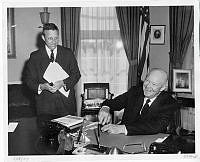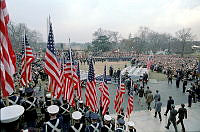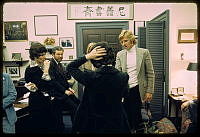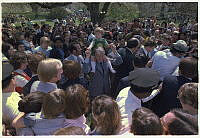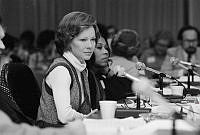White House Decorative Arts in the 1880s
Copyright © White House Historical Association. All rights reserved under international copyright conventions. No part of this article may be reproduced or utilized in any form or by any means, electronic or mechanical, including photocopying, recording, or by any information storage and retrieval system, without permission in writing from the publisher. Requests for reprint permissions should be addressed to books@whha.org
James and Lucretia Garfield moved into the Executive Mansion in 1881. With $30,000 from Congress, Mrs. Garfield made plans to refurbish the Green Room and ordered a set of ebony furniture. However, by the time it arrived President Garfield had been shot by a disgruntled office seeker and then died a few months later. His successor, Chester Arthur, did not occupy the White House until the house was redecorated to suit his tastes. The rooms were cleared of all damaged and unfashionable furniture. Twenty-four wagonloads of furniture and thirty barrels of china were sent to auction. Arthur commissioned Associated Artists, of which Louis Comfort Tiffany was a partner, to makeover several rooms in the house. No furniture was commissioned but stained glass, lighting fixtures, mantels, over mantel mirrors and decorative painting using gold and silver leaf in the style of the Aesthetic Movement were designed for several spaces.
Grover Cleveland and his young bride Frances Folsom bought a private home in the suburbs of Washington, D.C. to protect their privacy and only lived at the White House during the official social season. The Clevelands had the northwest corner room, their bedroom, repapered and ordered some chairs, a wardrobe, and a ladies writing desk to furnish it. Also, a special plush sofa was ordered for the space under the Palladian west window in the second-floor corridor where Frances Cleveland spent time relaxing and entertaining friends.

Vase. American, c. 1884. Tiffany placed earthenware vases from his shop on either side of Arthur's Red Room mantel.














